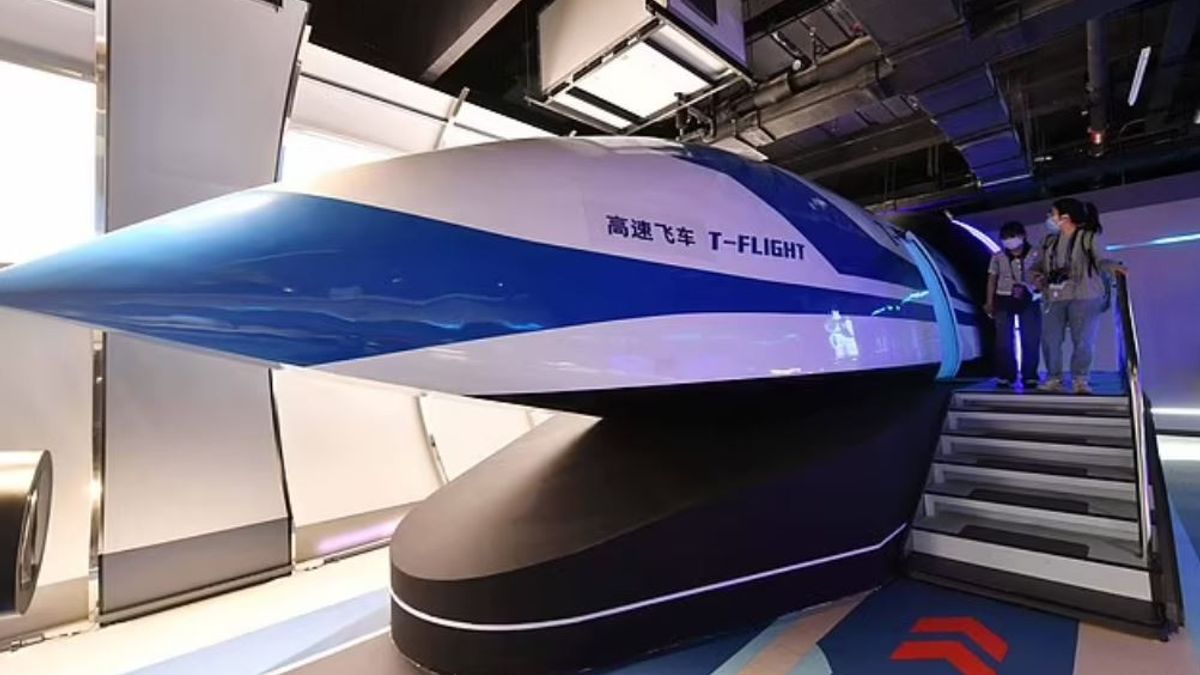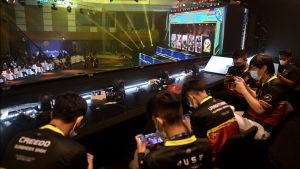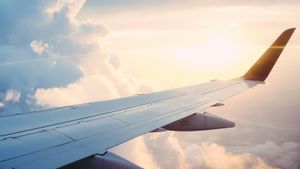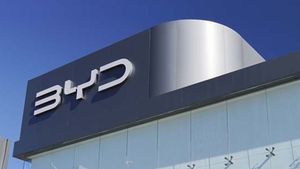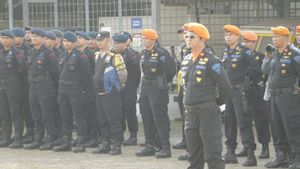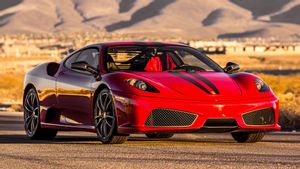JAKARTA - For more than a century, humans have relied on planes to drastically cut domestic travel times. However, imagine taking a train that can take you to your destination faster than any commercial aircraft.
That may be a reality waiting for China in the coming decades, as the country has reached an important milestone in its efforts to introduce ultra-fast train travel.
The 'T-Flight' train has reached record speeds of 387mph (622.816 km per hour) on short test tracks - even faster than Japan's MLX01 Maglev, the world's fastest train operating at a speed of 361mph (580.973 km per hour).
However, Chinese engineers hope this train will reach an astonishing speed of 1,243mph (2000,415 km per hour) after being commercialized. This is certainly much faster than the speed of sound and more than twice the speed of the Boeing 737 aircraft.
At such a speed, the T-Flight train can travel from Wuhan to Beijing in just 30 minutes, compared to more than four hours like the current high-speed train.
T-Flight uses magnetic levitational technology (maglev), where magnets are used to lift capsules over the track, allowing it to glide smoothly.
This eliminates the need for wheels and therefore every friction incident provides faster and calmer service.
T-Flight will be a hyperloop train, meaning it will transport people at high speed inside the tube between remote locations.
SEE ALSO:
The concept - first proposed in 1910 by US engineer Robert Goddard - gained renewed interest in 2013 due to white paper by billionaire entrepreneur and founder of SpaceX, Elon Musk.
T-Flight has been built by China Aerospace Science and Industry Corporation (CASIC).
In a test in Datong in the northern province of Shanxi, T-Flight reached 387mph (623kph) in a low vacuum tube measuring only 1.2 miles (2km).
In the second round of testing, CASIC is targeted to extend its trajectory more than 30 times so that it can reach an ideal speed. China has the world's first commercial maglev system.
The 18.6-mile-long trajectory, which opened in 2002 in Shanghai, connects Shanghai Pudong Airport and downtown and spent more than 1 billion pounds (Rp19.8 trillion) to build.
On its track, the train runs up to 431 kilometers per hour (267 miles per hour) and is the fastest commercial train system in the world to date.
The fastest train in the world was built by Japan, but has not yet been commercially operated. Operated by the Japan Railways Group, the maglev train broke a world record after reaching 374mph (603kph) on an experimental trajectory in 2016.
China also has a 'Fuxing' bullet high-speed train, but they don't use maglev technology and operate at a maximum speed of 350 kilometers per hour (217 miles per hour).
Ultimately, China wants to build a tube system between Wuhan and Beijing - a distance of more than 650 miles (1055km) - which can cut travel time from four hours to half an hour.
However, this could take decades to happen due to cost and practical problems - similar to the UK's messy HS2 train line. It's not clear how much was spent on the project.
If the T-Flight reaches 1,243mph after commercialization, it will far exceed the train currently operating around the world, as well as commercial aircraft. This will even be faster than NASA's latest experimental aircraft, X-59, which the agency says can sail on 937mph.
However, the T-Flight will not be as fast as the Concorde, the last supersonic aircraft to fly, which can reach 1,350mph.
The Japanese Bullet Train runs at 275mph (442.57 km/hour), while the Eurostar reaches 186mph (299,338 km/h) and most of the trains in the UK operate at around 125mph (201,168 km/h). Meanwhile, in Indonesia, the Jakarta Bandung high-speed train, Woosh, can reach 380 km/hour. The train also uses Chinese rail fast technology.
The English, Chinese, Japanese, Arabic, and French versions are automatically generated by the AI. So there may still be inaccuracies in translating, please always see Indonesian as our main language. (system supported by DigitalSiber.id)
